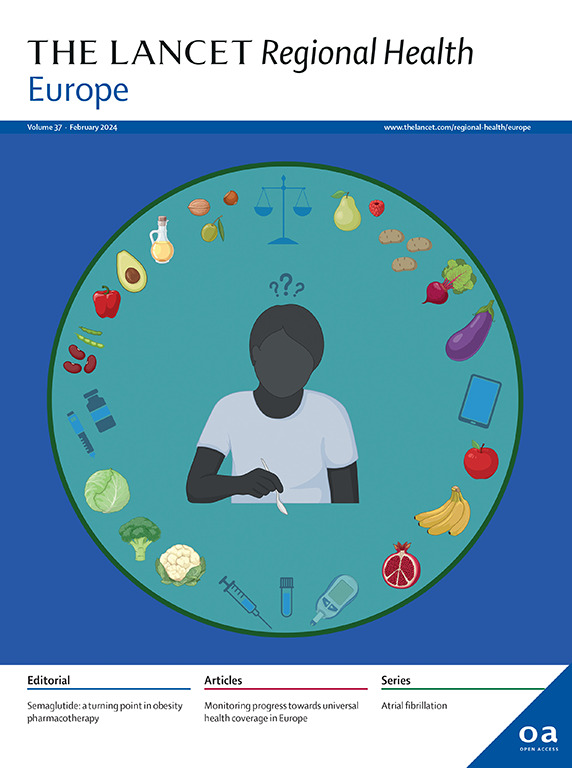Control of HIV across the WHO European region: progress and remaining challenges
IF 13.6
Q1 HEALTH CARE SCIENCES & SERVICES
引用次数: 0
Abstract
Despite the ambitious global goal to control HIV transmissions by 2030, more than 30% of people with HIV from the WHO European Region show persistent transmissible levels of the virus. Successful introduction of oral pre-exposure prophylaxis (PrEP) has led to significant decreases in new HIV transmissions in some areas of Europe, particularly among men who have sex with men. However, the limited PrEP access or lack of state funding in many European countries underlines the need to increase efforts to make PrEP consistently and equitably available for all individuals in need. The success of modern antiretroviral therapy (ART) is evident throughout the WHO European region, with more than 90% of treated individuals with viral suppression. Remaining barriers to control HIV include disparities in access to testing facilities such as community-based centers, persistently high levels of late diagnosis, delayed linkage to care especially for undocumented migrant populations, and inequalities in access to treatment. Retention in care and maintenance of viral suppression are additional challenges. The ongoing war in Ukraine is causing service disruption for people with HIV. Combating HIV associated stigma and discrimination, particularly in Eastern Europe and Central Asia, seems paramount in removing barriers to testing; new testing strategies, such as emergency room opt-out testing, could enable earlier diagnosis of HIV in transmission groups that have been difficult to reach. This review summarizes the barriers, opportunities, and pathways towards improvement of the HIV response in the WHO European region.
世卫组织欧洲区域艾滋病毒控制:进展和仍然存在的挑战
尽管世卫组织制定了到2030年控制艾滋病毒传播的宏伟全球目标,但世卫组织欧洲区域30%以上的艾滋病毒感染者表现出持续可传播的病毒水平。在欧洲的一些地区,口服暴露前预防(PrEP)的成功推行使艾滋病毒新发传播显著减少,特别是在男男性行为者中。然而,在许多欧洲国家,PrEP的获取有限或缺乏国家资金,这突出表明需要加大努力,使所有有需要的人都能持续和公平地获得PrEP。现代抗逆转录病毒疗法(ART)的成功在整个世卫组织欧洲区域是显而易见的,90%以上的接受治疗的个体病毒得到抑制。控制艾滋病毒的其他障碍包括在获得以社区为基础的中心等检测设施方面存在差异,诊断迟发率居高不下,与护理的联系延迟,特别是对无证移民人口,以及获得治疗方面的不平等。保留护理和维持病毒抑制是另一个挑战。乌克兰正在进行的战争导致艾滋病毒感染者的服务中断。消除与艾滋病毒有关的耻辱和歧视,特别是在东欧和中亚,似乎对消除检测障碍至关重要;新的检测策略,如急诊室选择退出检测,可以在难以到达的传播群体中更早地诊断出艾滋病毒。本综述总结了世卫组织欧洲区域改善艾滋病毒应对的障碍、机会和途径。
本文章由计算机程序翻译,如有差异,请以英文原文为准。
求助全文
约1分钟内获得全文
求助全文
来源期刊

Lancet Regional Health-Europe
Multiple-
CiteScore
19.90
自引率
1.40%
发文量
260
审稿时长
9 weeks
期刊介绍:
The Lancet Regional Health – Europe, a gold open access journal, is part of The Lancet's global effort to promote healthcare quality and accessibility worldwide. It focuses on advancing clinical practice and health policy in the European region to enhance health outcomes. The journal publishes high-quality original research advocating changes in clinical practice and health policy. It also includes reviews, commentaries, and opinion pieces on regional health topics, such as infection and disease prevention, healthy aging, and reducing health disparities.
 求助内容:
求助内容: 应助结果提醒方式:
应助结果提醒方式:


